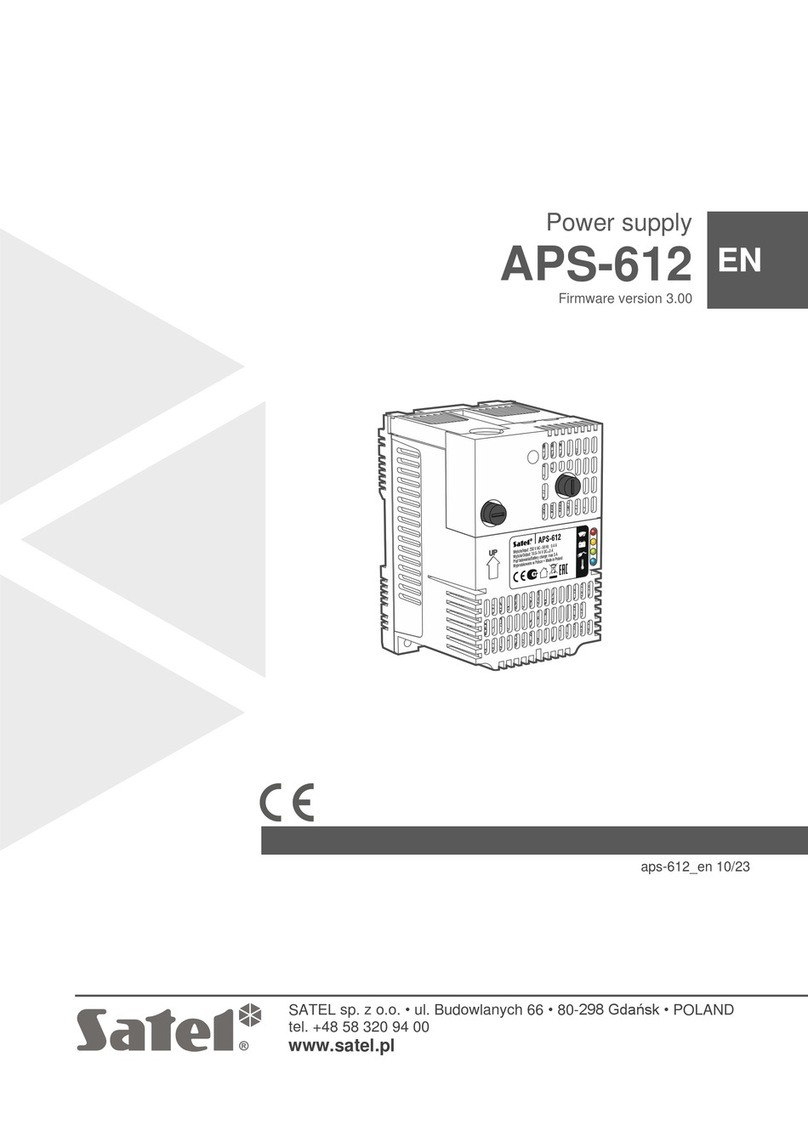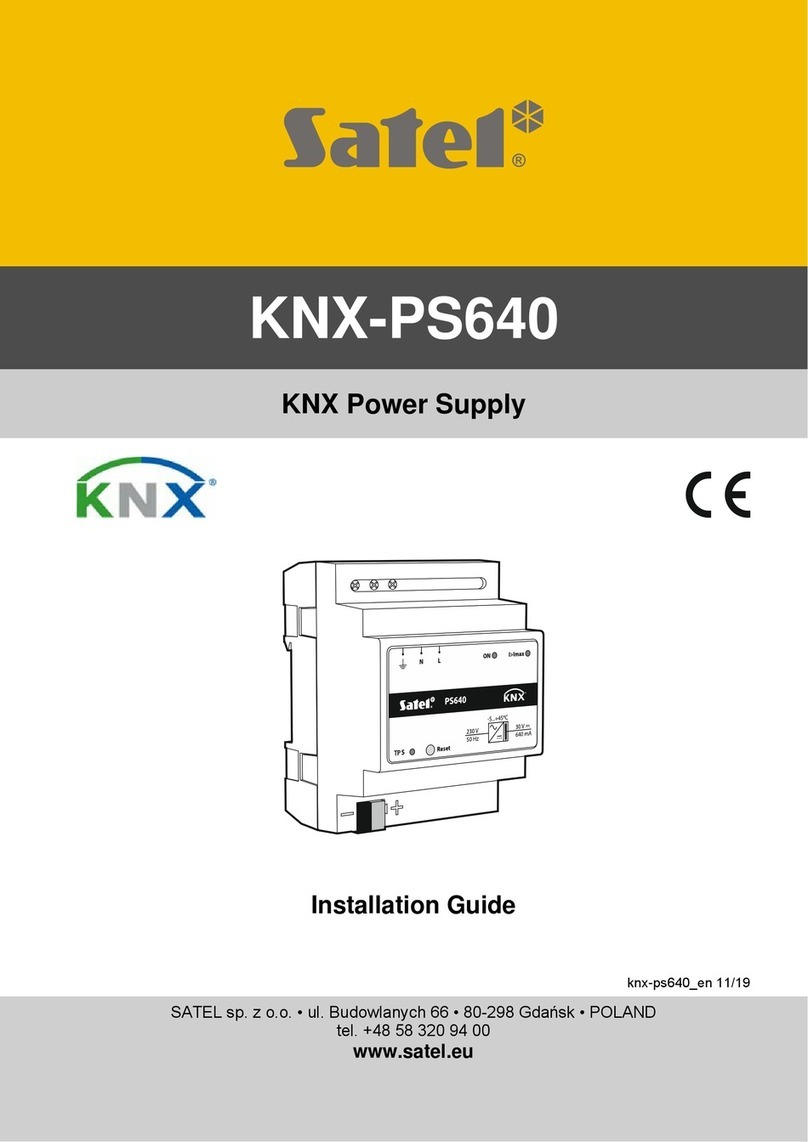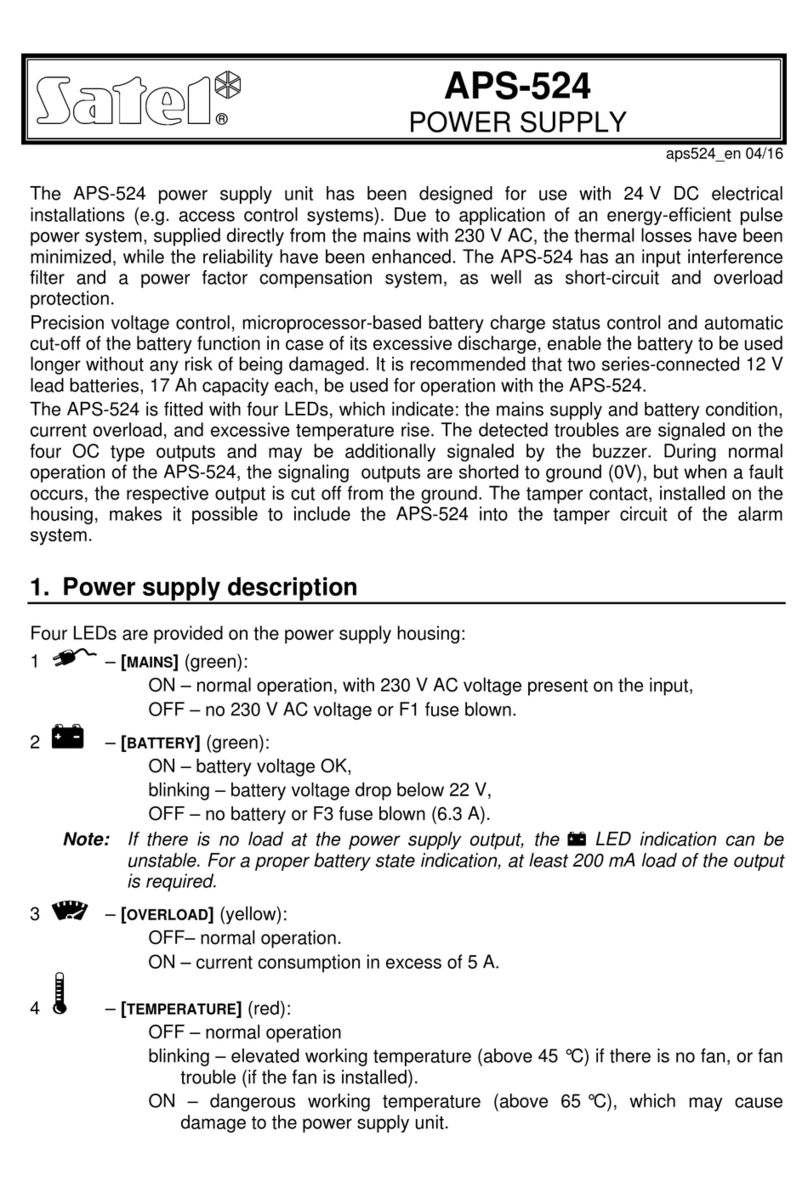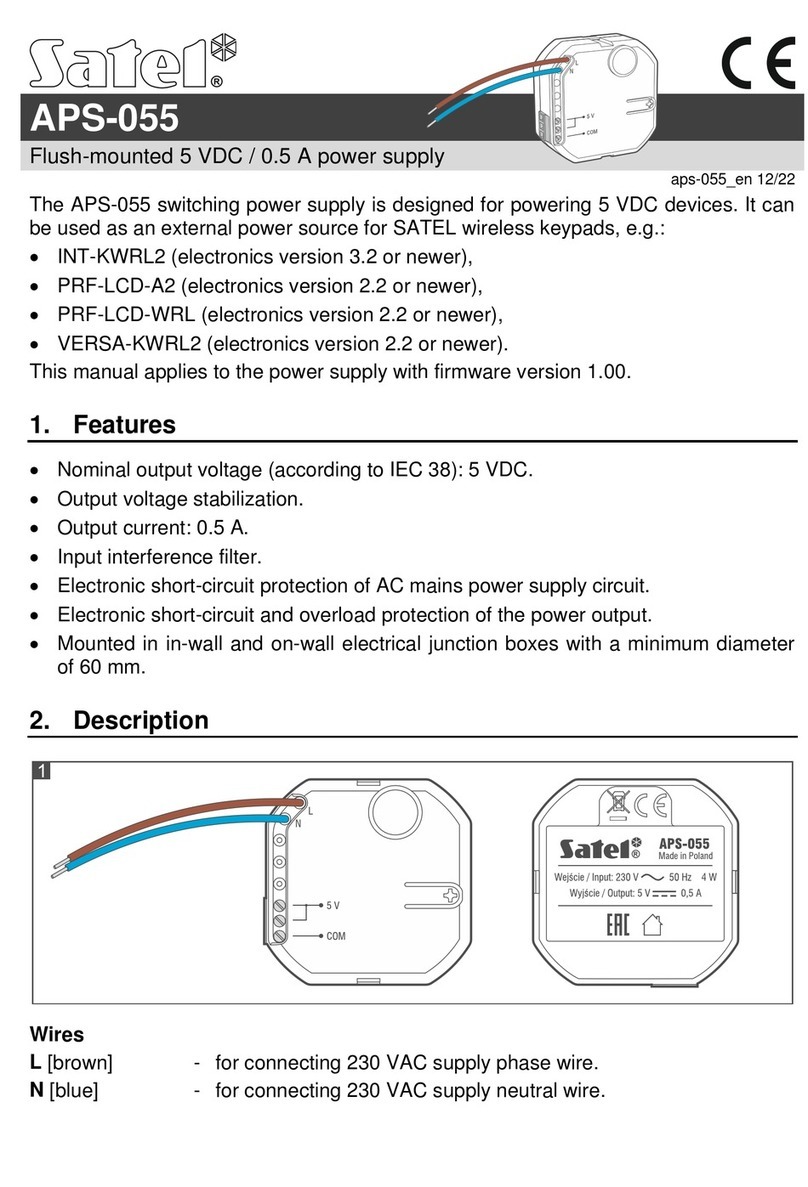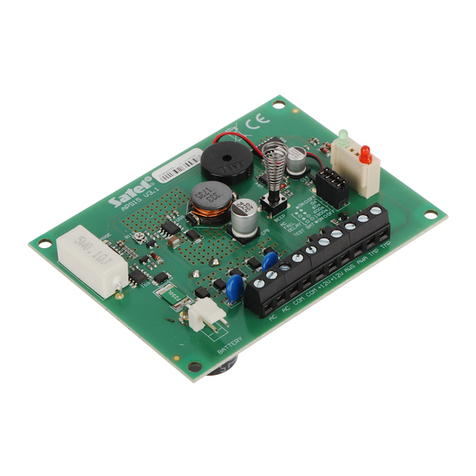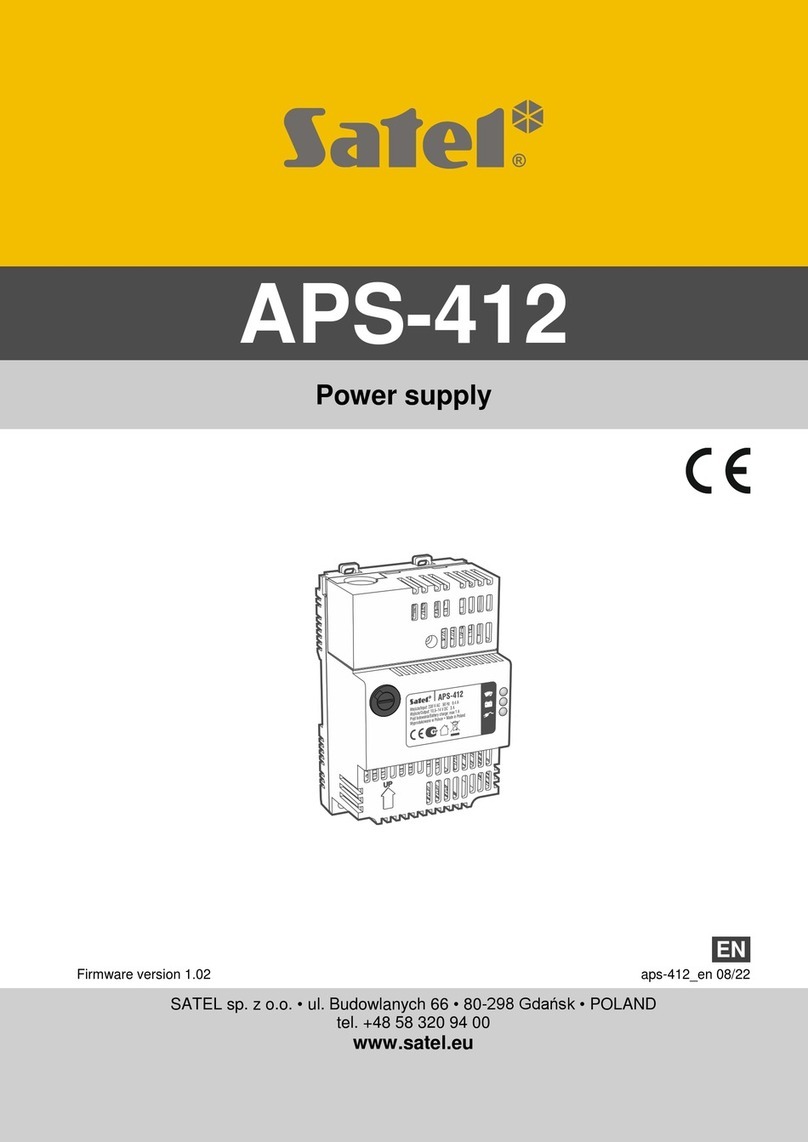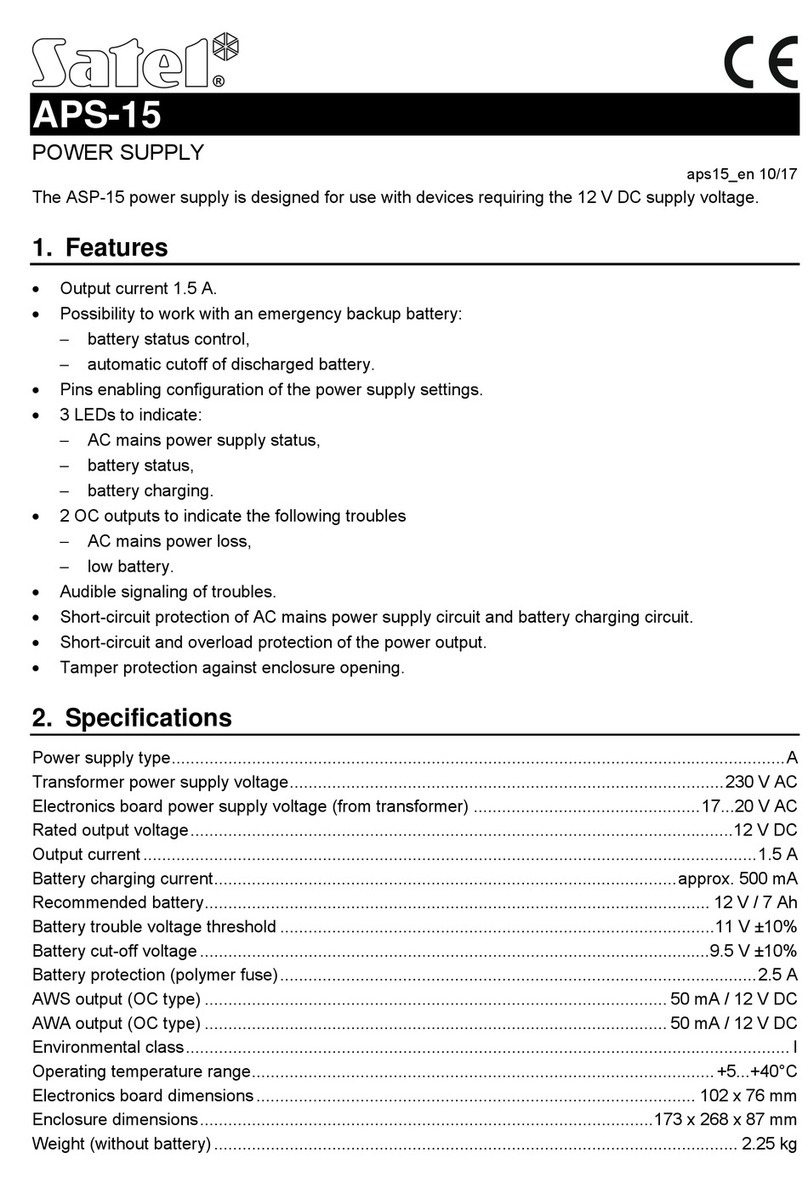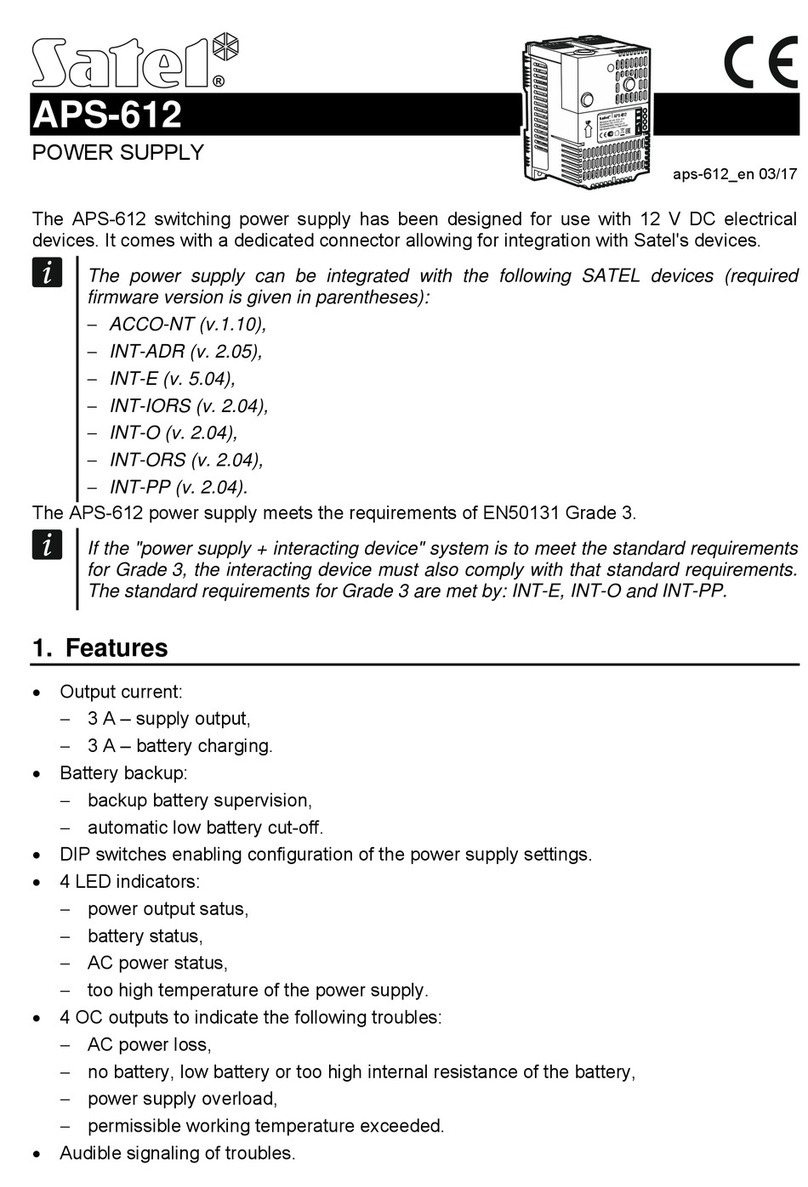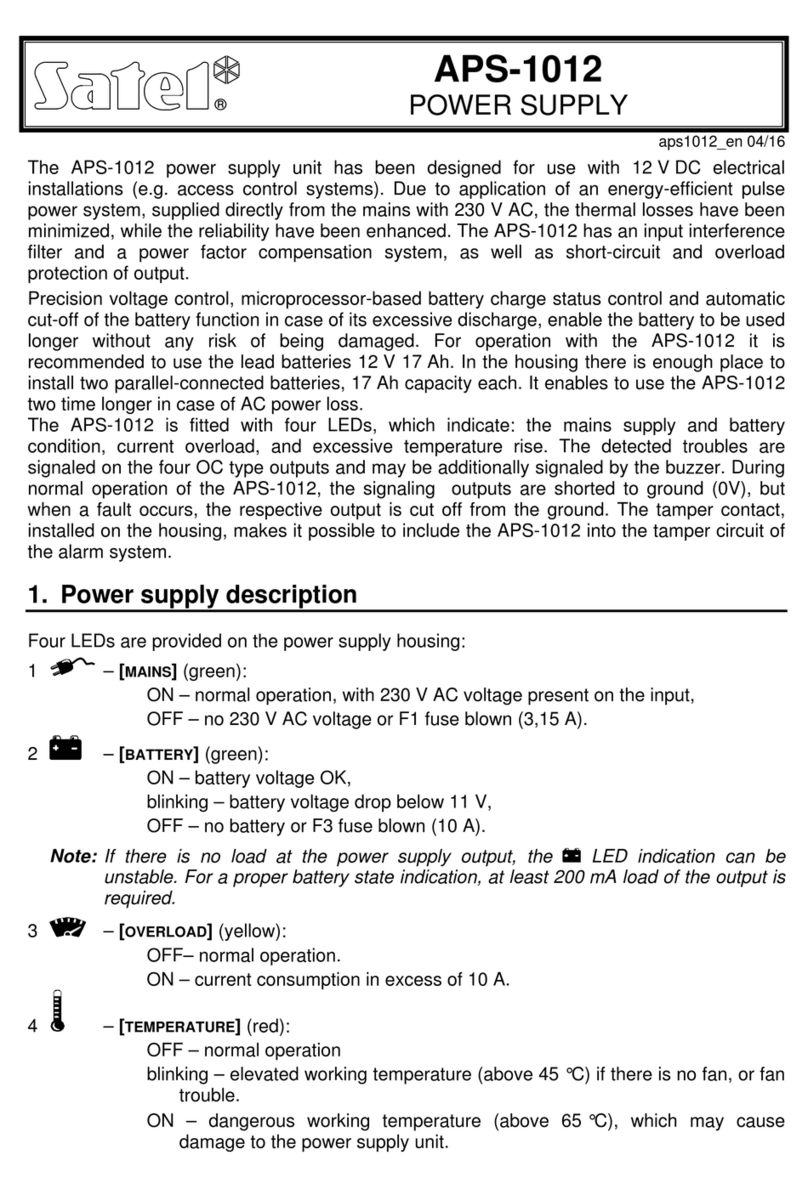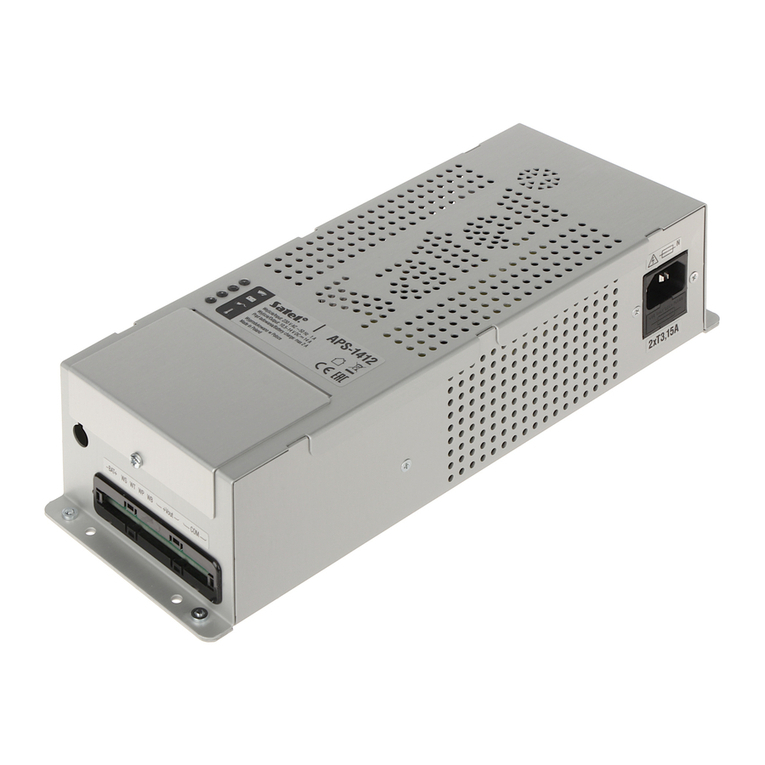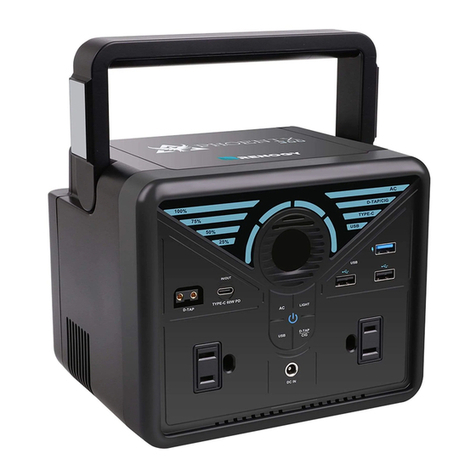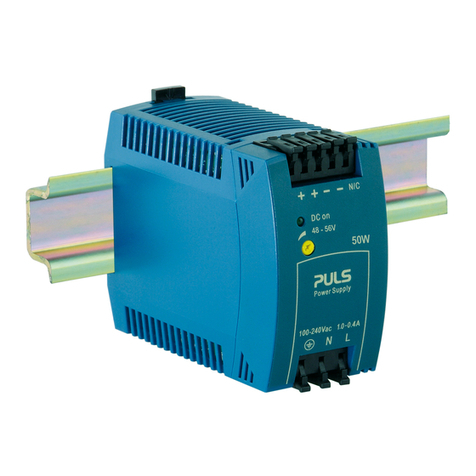
SATEL APS-30 3
Description of terminals:
AC – power input (17-24 V AC).
COM – common ground.
+12V – power supply output (
13.6-13.8 V DC)
.
AWS – OC type output indicating loss of 230 V AC power.
AWB – OC type output indicating low voltage or failure of the battery.
In the normal state, the OC type output is shorted to common ground (0 V). In the active state
(trouble signaling), the output is disconnected from common ground.
3.
Installation
Disconnect power before making any electrical connections.
Before installation, prepare a load balance so as not to overload the power supply.
In normal operating conditions, the sum of currents consumed by the connected
devices and the battery charging current must not exceed 3 A.
The power supply has been designed for use with lead-acid batteries or other
batteries having similar charging characteristics. Using other batteries than the
recommended ones may cause an explosion.
The used batteries must not be discarded, but should be disposed of in accordance
with the existing rules for environment protection.
The transformer should be permanently connected to the 230 V AC mains supply. Before you
make the cabling, familiarize yourself with the electrical installation of the facility. Make sure that
the circuit you choose for powering will be always alive. The circuit should be protected with
a proper safety device. The owner or user of the power supply should be instructed on how to
disconnect the transformer from the mains (e.g. by indicating the fuse which protects the supply
circuit).
A 12 V lead-acid sealed battery can be connected to the power supply as a backup power
source. The power supply enclosure can accommodate a battery with 17 Ah capacity.
If the power supply is to be installed in another enclosure (e.g. SATEL made OPU-3 P or
OPU-4 P), skip the steps from 1 to 7 and mount the electronics board as recommended in
the installation guide for the given enclosure.
1. Insert 4 spacers in the corresponding holes in the enclosure base. The spacers must not
come out of the holes when under pressure.
2. Run the cables through the hole in the enclosure base.
3. Use 4 screws to secure the enclosure base to the mounting surface.
4. Turn off power supply in the 230 V AC circuit to which the transformer is to be connected.
5. Connect the 230 V AC cables to the terminals of transformer primary winding. Connect the
ground cable to the terminal on the back panel of the enclosure.
6. Break off the separate LED board from the electronics board.
7. Mount the electronics board on the spacers and secure the LED board with screws to the
enclosure cover. Make sure the LEDs enter their corresponding holes according to the
designations on the enclosure cover:
– red LED (AC supply),
– green LED (battery status),
– yellow LED (battery charging).
